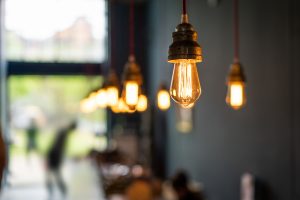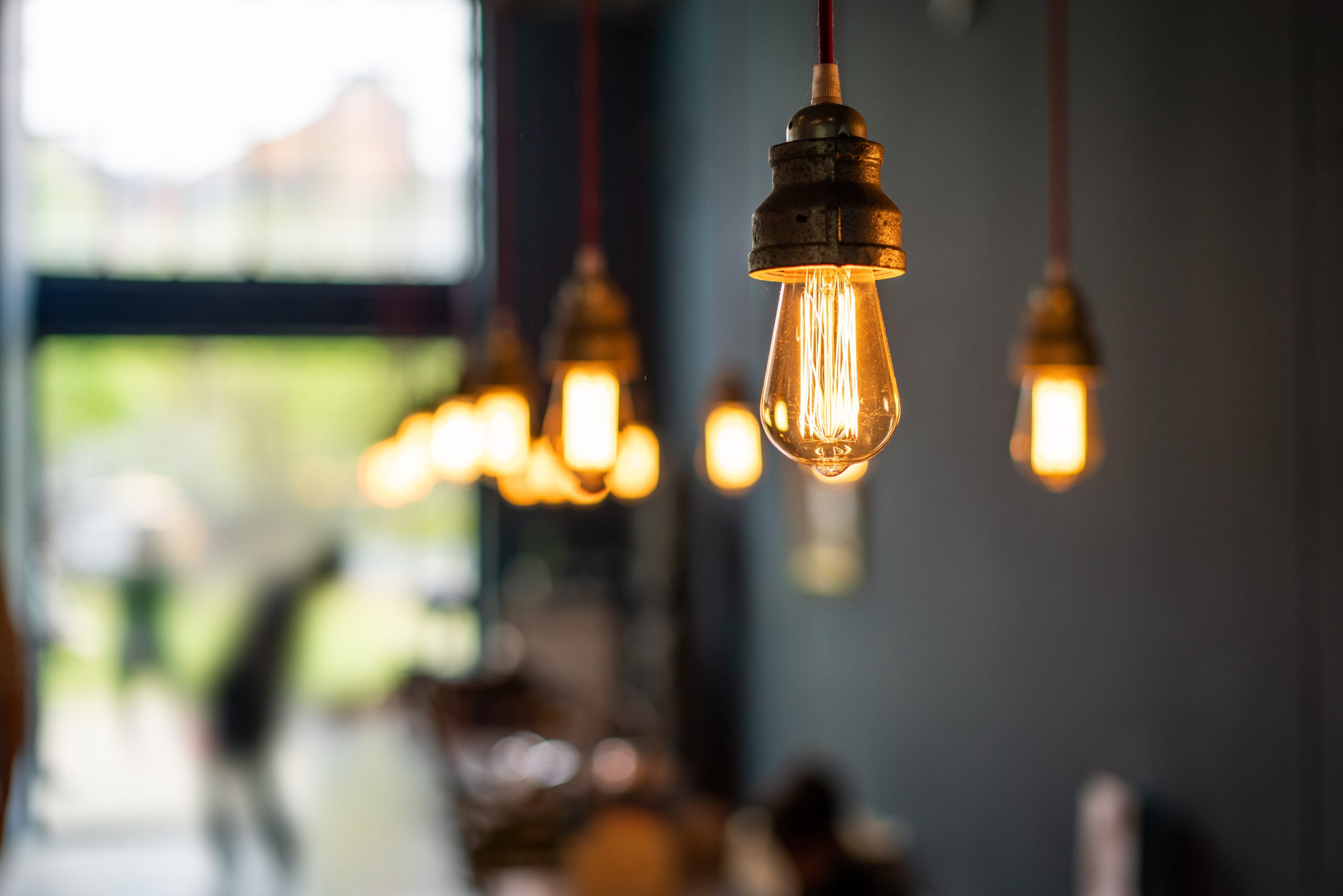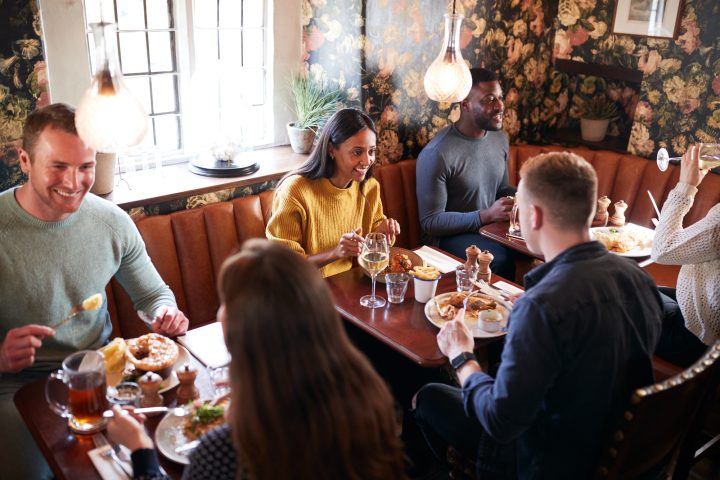
Whether you own a posh steak house that utilizes soft, low lighting or an energetic, bright café, one thing is certain: if the doors are open, the lights are on, and when the lights are on, the energy bill goes up.
When it comes to saving energy and money in a restaurant, choosing the right lighting can make a significant difference. Here is the ultimate guide for everything you need to know about energy-saving lighting for your restaurant.
- Switch to LED lighting. If you’ve done any amount of research about saving energy for your lighting, you have undoubtedly heard this recommendation before. Using LED lighting instead of fluorescent or incandescent lighting is one of the quickest, easiest, and most cost-effective ways to save energy at your restaurant.
On average, LED bulbs use 75% less energy than incandescent bulbs and produce the same amount of illumination. Incandescent bulbs also have a shorter lifespan, about 1,000 hours, but LED lights regularly last between 20,000-50,000 hours, depending on the quality of the bulb. Fluorescent lights can also last for about 20,000 hours, but they are not as efficient as LED lights. Along with using less energy and lasting for a long period of time, LED lights also generate less heat, which is especially beneficial during the summer months.
-
Use task lighting. Task lighting refers to the sources of light other than overhead lighting, such as lamps or sconces. Instead of relying solely on overhead lighting, consider implementing task lighting in specific areas where additional illumination is needed. This allows you to light up particular workstations or tables without fully lighting the entire space, reducing energy consumption.
Task lighting is especially popular in fine dining restaurants as it helps to “set the mood” by adding a certain level of elegance. Even if that is not the style for your restaurant, there is still a wide variety of task lighting that will match the design of the restaurant and offer you the same energy-saving benefits.
- Eliminate unnecessary illumination. Why pay for lights to be on when they aren’t needed? There are certain areas of your restaurant, such as bathrooms, pantries, and reservation-only rooms, where the lights may not need to be on all the time. There are other times when you do want the lights on, but not on full brightness.
By installing dimmer switches and motion sensors, you can optimize energy usage. Dimmers allow you to adjust the light output based on the specific needs of your restaurant, ensuring that the lighting matches the occasion and time of day while also optimizing energy usage. Motion sensors automatically turn off lights in unoccupied areas, ensuring that energy isn’t wasted when spaces are vacant.
- Let in the light. Sunlight is good for many things—growing plants, helping with mental health, generating vitamin D production…and saving on energy (especially in the winter). Make the most of natural light during the daytime by fully utilizing windows, skylights, and glass doors. This can help reduce the reliance on artificial lighting.
Even during warmer months, you can still utilize the natural lighting by leaving the blinds open during the morning and closing them during the heat of the day. Of course, this is dependent upon your location. For areas that experience extreme summer conditions, you might save more energy by keeping the blinds closed all the time and keeping out more heat for the AC unit to overcome.
- Switch to energy-efficient ballasts. It has already been mentioned that switching to LED lighting instead of fluorescent lighting will save you a significant amount of energy. However, if you still choose to use fluorescent lighting in your restaurant, here is what you can do to make them as energy efficient as possible.
Consider replacing older magnetic ballasts with energy-efficient electronic ballasts. Electronic ballasts reduce energy consumption and eliminate the annoying flickering associated with older ballasts. This will not only help you to save energy, but it will also help your restaurant to look more professional. Customers will appreciate a steady light much more than a distracting one that is constantly flickering and threatening to turn off.
- Evaluate your neon signs. Neon signs have been around for decades, but they have grown especially popular in recent years since custom-made signs are more readily available. They can help to draw attention and showcase the personality of the restaurant, but they are rarely used to illuminate a room. While neon signs are a favorite for an Instagram post, it’s important to note that they are not energy efficient, and they might be adding a pretty penny to your electricity bill.
Neon signs typically require a high-voltage power supply to operate. The power supply converts the standard electrical supply voltage (such as 120 volts) to a higher voltage (usually in the range of 2,000 to 15,000 volts) required for the neon tubes to function. The power supply itself consumes some energy, typically in the range of 50 to 150 watts, depending on its size and efficiency. The neon tubes themselves also consume additional energy, but this varies depending on the length, diameter, and color of the tubes.
Lighting is a key element of any restaurant. If it’s too dark and customers feel disoriented during their meal, they may take their business elsewhere the next time they go out for dinner. On the other hand, if the lighting is too bright and doesn’t match the setting, customers may feel out of place. Along with helping to set the tone of a dining experience, the energy used for artificial lighting can greatly affect the overhead cost of a restaurant. Lighting is important, and it’s important to get it right.
If you are looking for ways to decrease your energy expenses and still have lighting that matches your restaurant, consider reaching out to a GWT2Energy consultant who can help create the best energy-saving plan for your restaurant’s needs.




